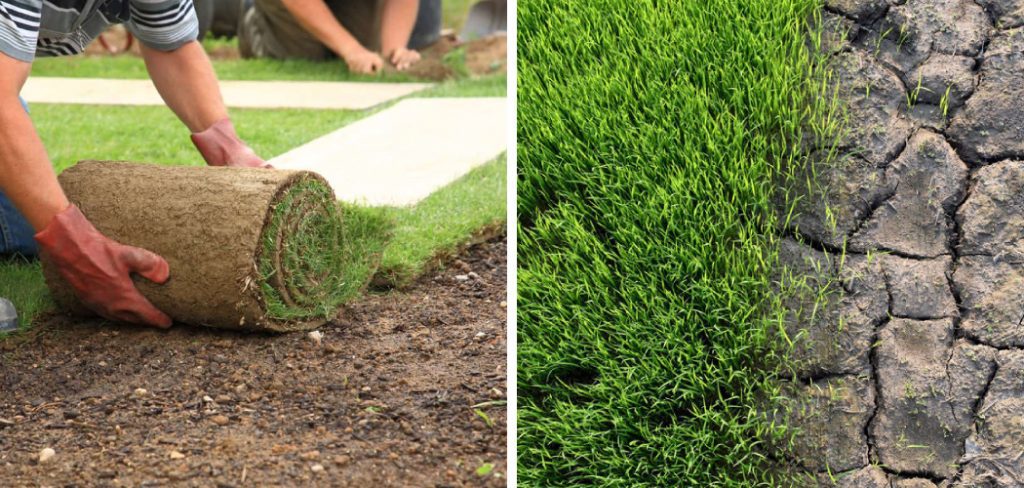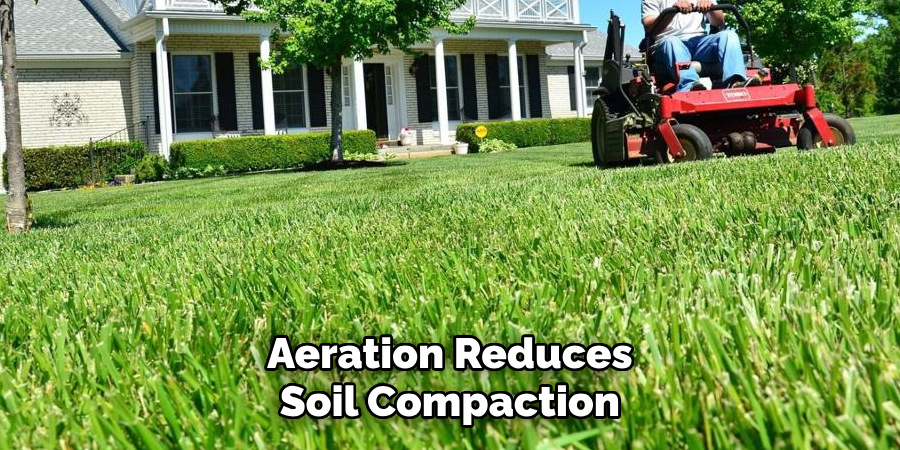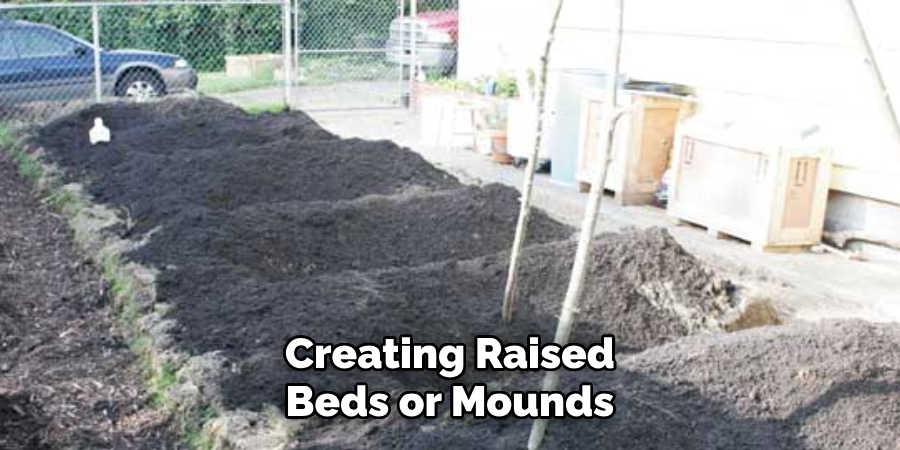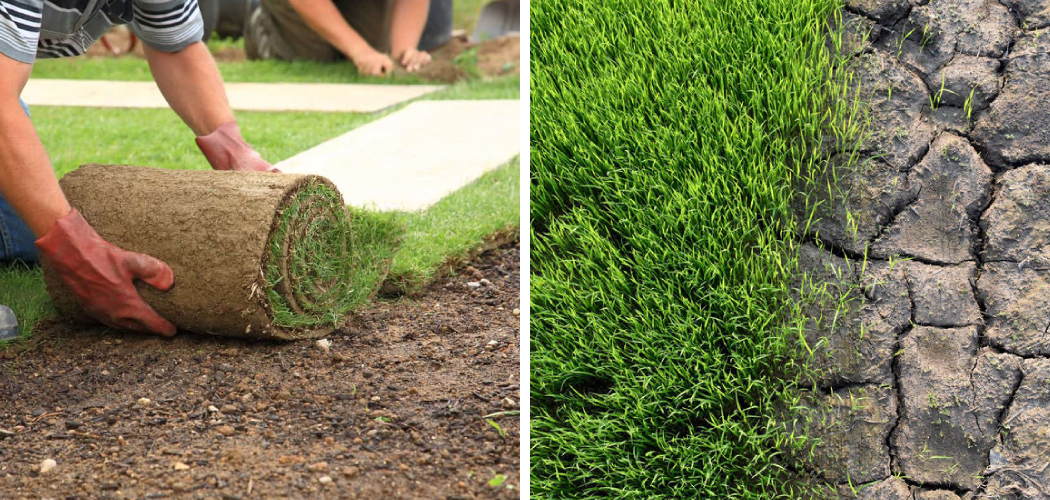To treat clay soil for grass, amend the soil with organic matter and sand to improve drainage and loosen the soil structure. This will help encourage healthy grass growth and prevent waterlogging.
Clay soil can be difficult for grass as it tends to compact easily, leading to poor drainage and limited root development. However, by adding organic matter such as compost and sand, you can improve the soil’s texture, allowing for better water infiltration and root penetration.
Additionally, proper lawn maintenance practices such as regular aeration and the use of appropriate fertilizers can help mitigate the challenges of clay soil and promote a vibrant grassy lawn. Remember to water deeply and infrequently to encourage deep root growth and adapt grass species that are well-suited for clay soil conditions.

How to Treat Clay Soil for Grass: Step by Step Guide
Understanding Clay Soil For Lawns
Understanding clay soil is crucial when it comes to treating it for grass growth. Clay soil has certain characteristics that pose challenges for lawns. Its dense and compact nature makes it difficult for water to penetrate, resulting in poor drainage.
Additionally, clay soil tends to become hard when dry and sticky when wet, making it hard for roots to establish and for grass to grow. Moreover, its heavy composition prevents air circulation and limits nutrient availability. To treat clay soil for grass, it is important to improve its structure and drainage through methods such as adding organic matter, aerating the soil, and regularly top-dressing with sandy soil.
These practices help break up the clay and create a more favorable environment for grass roots to thrive. By understanding the characteristics and challenges of clay soil, you can effectively treat it to achieve a healthy and lush lawn.
Testing The Clay Soil
Testing clay soil is an essential step in determining its quality for growing healthy grass. Various methods can be used to assess the composition of the clay soil. Analyzing the results of these tests helps in understanding the soil’s properties, such as its ph level, nutrient content, and water retention capacity.
It also provides insights into any potential issues that may hinder grass growth, like excessive compaction or poor drainage. By evaluating the clay soil comprehensively, gardeners and landscapers can determine the appropriate treatments and amendments required to improve its texture and fertility.
This knowledge enables them to implement the necessary steps to create an optimal environment for grass to thrive, resulting in a lush and vibrant lawn.
Preparing The Clay Soil For Grass
Preparing the clay soil for grass is crucial for success in grass growth. Soil preparation is important because it helps improve the soil’s structure and drainage. This allows the grass roots to penetrate and establish themselves deeply into the soil.
Before treating the clay soil, there are a few steps to take to ensure the best results. Firstly, it’s important to remove any existing vegetation or debris from the area. This will help prevent weeds from growing and competing with the grass.
Next, loosening the soil with a tiller or aerator will improve its structure and allow for better water and nutrient absorption. Adding organic matter, such as compost or aged manure, will also help improve the soil’s fertility and ability to hold moisture.
Finally, leveling the soil and raking it smooth will create a suitable surface for grass seed or sod installation. By following these steps, you can effectively treat clay soil for grass and promote healthy growth.
Aeration For Clay Soil
Aeration is crucial for treating clay soil and promoting healthy grass growth. By aerating the soil, you can improve its drainage capabilities and root development. This, in turn, allows for better absorption of water, nutrients, and oxygen. The benefits of aeration for clay soil are numerous.
Firstly, it helps to break up compacted soil, allowing the roots to penetrate deeper. This helps the grass plants establish a stronger and more extensive root system. Secondly, aeration reduces soil compaction, which enhances water infiltration and reduces the risk of waterlogging or runoff.

Thirdly, it improves the overall soil structure, making it easier for air and moisture to penetrate. To get the best results from aerating clay soil, it is important to follow some best practices. Use a core aerator to remove small plugs of soil and ensure that enough spacing is maintained.
Regularly aerating the soil, typically once or twice a year, can help maintain healthy and vibrant grass on clay soil.
Amending Clay Soil
Amending clay soil is crucial to create favorable conditions for growing healthy grass. Different types of amendments can be used to enhance the quality of clay soil. Organic matter, such as compost or well-rotted manure, can improve drainage and increase nutrient availability.
Adding sand can also help in breaking up the heavy texture of clay soil. Gypsum, a calcium sulfate compound, aids in loosening the soil and preventing compaction. When applying amendments, it is essential to ensure proper quantity and distribution. Generally, a layer of 2-4 inches of organic matter or sand should be spread evenly over the soil surface.
Gypsum can be applied at a rate of 40-50 pounds per 1,000 square feet. By following these amendment practices, clay soil can be effectively treated, enabling healthy grass growth.
Improving Drainage In Clay Soil
Improving drainage in clay soil is essential for promoting healthy grass growth. Clay soil tends to retain water and becomes compacted, resulting in poor nutrient absorption. To address this issue, several techniques can be implemented. One effective method is incorporating organic matter, such as compost or well-rotted manure, into the soil.
This helps to improve its structure and increase its ability to drain excess water. Another approach is to add gypsum, which helps to break up the clay particles and improve drainage. Additionally, creating raised beds or mounds can also help facilitate better drainage by allowing water to flow away from the grass.

It’s important to understand the significance of proper drainage in clay soil to ensure optimal grass health and growth. By implementing these techniques, you can transform clay soil into a more hospitable environment for your grass.
Choosing The Right Grass For Clay Soil
When selecting grass for clay soil, there are several factors to consider. Firstly, choose grass varieties that thrive in clay soil conditions. These types of grass can handle the heavy, compacted nature of clay soil. Additionally, look for grass varieties that have deep root systems to help with better nutrient absorption.
Moreover, consider the maintenance level of the grass you choose, as some varieties may require more care. In addition, consider the climate and weather conditions in your area, as certain grass varieties may be better suited to your region. Lastly, consult with a professional landscaper or horticulturist for expert advice on which grass varieties will perform best in your clay soil.
By following these guidelines, you can effectively treat clay soil and create a lush, healthy lawn.
Maintaining The Health Of Grass In Clay Soil
Maintaining the health of grass in clay soil requires essential lawn care practices. First, ensure proper drainage by aerating the soil regularly. This helps water and nutrients reach the grass roots efficiently. Secondly, it is crucial to avoid compacting the soil, as it restricts root growth.
Regularly aerate and avoid heavy foot traffic on the lawn. Additionally, regularly fertilize the grass with nutrient-rich organic matter to improve soil fertility and promote healthy grass growth. Watering deeply but infrequently is also important, as it encourages deep root development.
Lastly, consider overseeding the lawn with grass varieties that are well-suited to clay soil conditions. By following these guidelines, you can prevent common issues and promote the vitality of grass in clay soil.
Frequently Asked Questions For How To Treat Clay Soil For Grass
How Can I Improve Clay Soil For Grass?
Improving clay soil for grass involves adding organic matter such as compost or peat moss to improve drainage and nutrient content. Aerating the soil and applying gypsum can also help break up clay particles. Additionally, choosing grass varieties that tolerate clay soil and properly watering the lawn can promote healthy grass growth.
What Grass Types Grow Well In Clay Soil?
Grass types that grow well in clay soil include tall fescue, kentucky bluegrass, and zoysia grass. These grasses have deep root systems that can penetrate clay soil and withstand its heavy texture. It is important to choose grass varieties that thrive in clay soil to ensure a lush and healthy lawn.
How Often Should I Water Grass On Clay Soil?
In general, clay soil retains moisture well, so it is important to water grass on clay soil less frequently but deeply. Watering once or twice a week, providing around 1 inch of water per session, is usually sufficient. This helps encourage deep root growth and prevents water runoff on the clay surface.
Are There Any Fertilizers Specifically For Clay Soil?
Yes, there are fertilizers specifically formulated for clay soil. These fertilizers contain a balanced mix of nutrients and help improve the soil structure. Look for fertilizers labeled as clay soil fertilizers, which often contain ingredients like gypsum, sulfur, and organic matter to enhance nutrient availability and promote healthy grass growth.
Can I Grow A Healthy Lawn On Clay Soil?
Yes, you can grow a healthy lawn on clay soil with proper care and maintenance. By improving soil drainage, adding organic matter, choosing grass varieties suitable for clay soil, and following proper watering and fertilizing practices, you can create an environment conducive to healthy grass growth even in clay soil conditions.
Conclusion
Overall, treating clay soil for grass requires a combination of patience, proper preparation, and ongoing maintenance. By following the steps outlined in this blog post, you can create an environment that is conducive to healthy grass growth, even in the most challenging soil conditions.
Remember to start by properly diagnosing the soil type and addressing any drainage issues. Implementing organic matter amendments, such as compost and peat moss, can significantly improve soil structure and texture. Additionally, regular aeration and topdressing with sand can help prevent compaction and create a better growing environment.
Lastly, choosing the right grass seed and implementing proper watering and fertilization techniques will ensure the continued health and vitality of your lawn. With these strategies in place, you can transform your clay soil into a thriving green oasis that you can be proud of.

